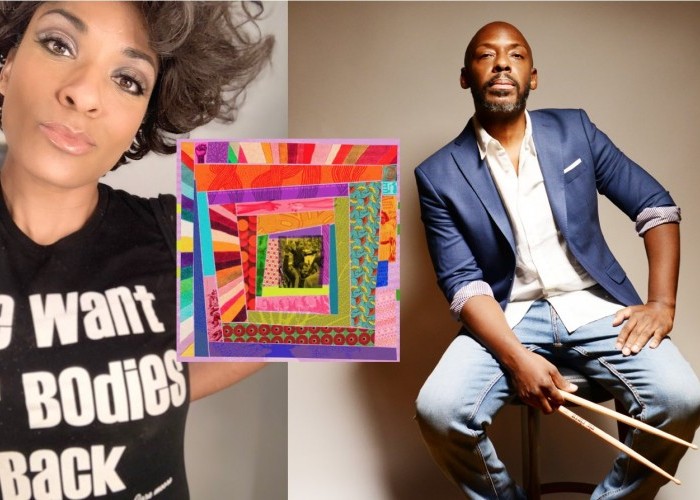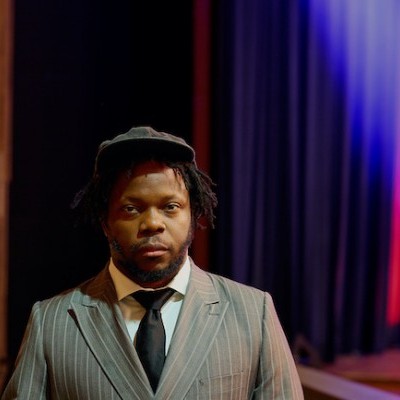Apr 2, 2024 12:59 PM
Saxophonist, Sonic Explorer Casey Benjamin Dies at 45
Casey Benjamin, the alto saxophonist, vocalist, keyboardist and producer who stamped his distinctive sounds on the…

Black Lives—From Generation To Generation makes a multi-generational plea for equity and equality with artists like Alicia Hall Moran, left, and E.J. Strickland.
(Photo: Jessica Care Moore/Black Women Rock and Shervin Lainez)In September 2020, in the wake of protests that rocked cities across the United States, DownBeat published a cover story titled “How Does It Feel To Be Free?” referring to composer/pianist Jason Moran’s wistful inquiry captured in the article — an inquiry that itself was echoing the 1963 Billy Taylor-penned jazz standard later popularized by Nina Simone. For Moran, a cry for racial equity was still on the money nearly 60 years later, a pensive sentiment that is, lamentably, still evergreen.
Comprising perspectives from a selection of artists that also spans generations, a potent new double album titled Black Lives–From Generation To Generation weaves a tapestry of commentary, complaints, visions and commands as a collection of ruminations on the state of affairs for Black people from Africa and across the diaspora.
In an exchange with DownBeat, producer Stefany Calembert said that she intentionally includes artists from ages 25 to 80 to illustrate that after the Civil Rights Era, “Things did not really change, even if many older composers thought a positive change [would] continue in the ’80s.” And yet, she continued, despite such continuity of struggle, those varied generational experiences are far from monolithic. “What Oliver Lake has lived the last 80 years in [the] U.S.A. is not what Cheick Tidiane Seck has lived in Africa and Europe the last 70 years. What Immanuel Wilkins has lived the last 25 years in Philadelphia is not what Tutu Puoane has lived the last 40 years in South Africa and Europe.
“These different places and times are essential to bring a concrete témoignage [or testimony] of what Black lives are living, thinking and expressing in 2022.”
Songs on From Generation To Generation both topically and musically run the proverbial gamut — from the struggle for equality to trumpeter Jeremy Pelt’s “Anthem For A Better Tomorrow”; from Guadeloupe-born drummer Sonny Troupé’s fusion guitar trio flecked with Muhammad Ali newsreel samples to a duet of electric guitarist Jean-Paul Bourelly and the poet/MC Sub-Z. The collection offers a worldview spectrum of Black realities articulated creatively and indelibly.
On “Walk” (performed by bassist Reggie Washington, DJ Grazzhoppa and Alicia Hall Moran), Hall Moran contributed what she classified as “a macabre lullaby,” an expression of the threadbare fears held by parents of young Black boys just trying to interface with this sometimes hazardous world. It was inspired by her own experience as a mother of two. “In that global human tradition of singing to your children, that element of danger always enters in. So, [we have] songs about don’t get bit by the spider, don’t fall off the bow.
“‘Walk’ is walking music,” she continued, “I always imagine that somebody was listening on headphones. That’s the vibe I’m coming from sonically.” For Hall Moran, it’s ultimately a conversation between generations: parent and child.
“Some of the steps are dangerous and some of the steps are very loving and tender,” she said. “And that when you’re on this walk, I am thinking of you. I’m telling you look out for the shadow, but I’m telling you [that as a Black child, you] are also a shadow. But what are you going to be … afraid of yourself? People are afraid of these shadows, but no, that’s just my child in a street lamp. He likes lamb chops and mashed potatoes, and his favorite class in school is history.”
E.J. Strickland’s “Language Of The Unheard” is also an intergenerational conversation of sorts, ruminating on Dr. Martin Luther King Jr.’s quote that “riots are the language of the unheard.” The statement profoundly resonated with the drummer, who shared with DownBeat that he “named the song before [he] wrote it.” Though he says he doesn’t condone riots, he “understands the frustration behind them,” which he noted “is symbolic of an urgency.”
“The Black community has been peacefully protesting, trying to pass legislation, and communicating in the best way possible our need for America to deliver its promise — liberty and justice for all — for centuries now. The overall pulse of this tune feels urgent. Two powerful downbeats make up the entire groove. But on top of that pulse is a beautiful melody that dances in celebration of Black lives who have triumphed despite our struggle. Beauty upon urgency is what I was going for.” He augmented that beauty with inspired touches such as overdubbed tambourines that signify “chains of oppression” being shaken off.
Beauty upon urgency is, in many ways, the overall effect of From Generation To Generation as a whole: a beautiful, urgent plea for racial equality. DB

Benjamin possessed a fluid, round sound on the alto saxophone, and he was often most recognizable by the layers of electronic effects that he put onto the instrument.
Apr 2, 2024 12:59 PM
Casey Benjamin, the alto saxophonist, vocalist, keyboardist and producer who stamped his distinctive sounds on the…

Albert “Tootie” Heath (1935–2024) followed in the tradition of drummer Kenny Clarke, his idol.
Apr 5, 2024 10:28 AM
Albert “Tootie” Heath, a drummer of impeccable taste and time who was the youngest of three jazz-legend brothers…

“Both of us are quite grounded in the craft, the tradition and the harmonic sense,” Rosenwinkel said of his experience playing with Allen. “Yet I felt we shared something mystical as well.”
Mar 12, 2024 11:42 AM
“There are a few musicians you hear where, as somebody once said, the molecules in the room change. Geri was one of…

Henry Threadgill performs with Zooid at Big Ears in Knoxville, Tennessee.
Apr 9, 2024 11:30 AM
Big Ears, the annual four-day music celebration that first took place in 2009 in Knoxville, Tennessee, could well be…

“I’m also at a point in my life where I don’t feel like I have anything to prove, like at all,” Akinmusire says about his art.
Mar 26, 2024 12:45 PM
At the risk of oversimplifying and romanticizing the story, Ambrose Akinmusire came bursting on the jazz scene at the…